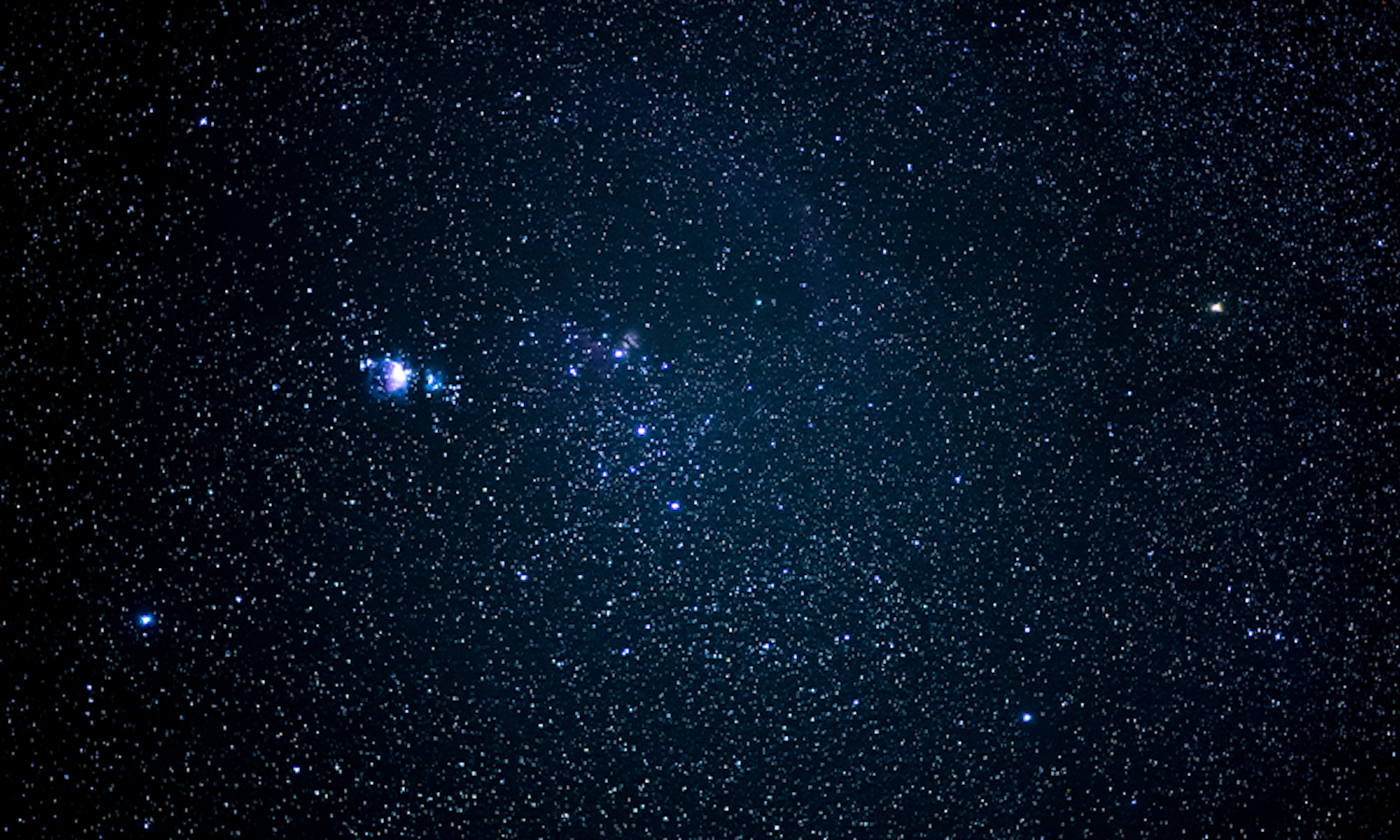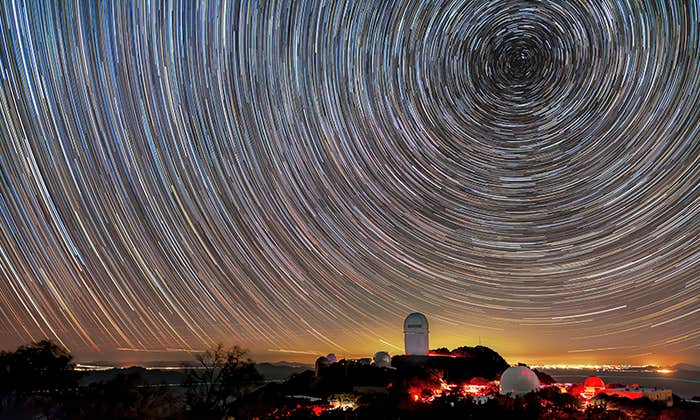In 1654, a German scientist and politician named Otto von Guericke was supposed to be busy being the mayor of Magdeburg. But instead he was putting on a demonstration for lords of the Holy Roman Empire. With his newfangled invention, a vacuum pump, he sucked the air out of a copper sphere constructed of two hemispheres. He then had two teams of horses, 15 in each, attempt to pull the hemispheres apart. To the astonishment of the royal onlookers, the horses couldn’t separate the hemispheres because of the overwhelming pressure of the atmosphere around them.
Von Guericke became obsessed by the idea of a vacuum after learning about the recent and radical idea of a heliocentric universe: a cosmos with the sun at the center and the planets whipping around it. But for this idea to work, the space between the planets had to be filled with nothing. Otherwise friction would slow the planets down.
The vacuum is singing to us, a harmony underlying reality itself.
Scientists, philosophers, and theologians across the globe had debated the existence of the vacuum for millennia, and here was von Guericke and a bunch of horses showing that it was real. But the idea of the vacuum remained uncomfortable, and only begrudgingly acknowledged. We might be able to artificially create a vacuum with enough cleverness here on Earth, but nature abhorred the idea. Scientists produced a compromise: The space of space was filled with a fifth element, an aether, a substance that did not have much in the way of manifest properties, but it most definitely wasn’t nothing.
But as the quantum and cosmological revolutions of the 20th century arrived, scientists never found this aether and continued to turn up empty handed.
The more we looked, through increasingly powerful telescopes and microscopes, the more we discovered nothing. In the 1920s, astronomer Edwin Hubble discovered that the Andromeda nebula was actually the Andromeda galaxy, an island home of billions of stars sitting a staggering 2.5 million light-years away. As far as we could tell, all those lonely light-years were filled with not much at all, just the occasional lost hydrogen atom or wandering photon. Compared to the relatively small size of galaxies themselves (our own Milky Way stretches across for a mere 100,000 light-years), the universe seemed dominated by absence.
At subatomic scales, scientists were also discovering atoms to be surprisingly empty places. If you were to rescale a hydrogen atom so that its nucleus was the size of a basketball, the nearest electron would sit around two miles away. With not so much as a lonely subatomic tumbleweed in between.

Nothing. Absolutely nothing. Continued experiments and observations only served to confirm that at scales both large and small, we appeared to live in an empty world.
And then that nothingness cracked open. Within the emptiness that dominates the volume of an atom and the volume of the universe, physicists found something. Far from the sedate aether of yore, this something is strong enough to be tearing our universe apart. The void, it turns out, is alive.
In December 2022, an international team of astronomers released the results of their latest survey of galaxies, and their work has confirmed that the vacuum of spacetime is wreaking havoc across the cosmos. They found that matter makes up only a minority contribution to the energy budget of the universe. Instead, most of the energy within the cosmos is contained in the vacuum, and that energy is dominating the future evolution of the universe.
Their work is the latest in a string of discoveries stretching back over two decades. In the late 1990s, two independent teams of astronomers discovered that the expansion of the universe is accelerating, meaning that our universe grows larger and larger faster and faster every day. The exact present-day expansion rate is still a matter of some debate among cosmologists, but the reality is clear: Something is making the universe blow up. It appears as a repulsive gravitational force, and we’ve named it dark energy.
The trick here is that the vacuum, first demonstrated by von Guericke all those centuries ago, is not as empty as it seems. If you were to take a box (or, following von Guericke’s example, two hemispheres), and remove everything from it, including all the particles, all the light, all the everything, you would not be left with, strictly speaking, nothing. What you’d be left with is the vacuum of spacetime itself, which we’ve learned is an entity in its own right.
Nothing contains all things. It is more precious than gold.
We live in a quantum universe; a universe where you can never be quite sure about anything. At the tiniest of scales, subatomic particles fizz and pop into existence, briefly experiencing the world of the living before returning back from where they came, disappearing from reality before they have a chance to meaningfully interact with anything else.
This phenomenon has various names: the quantum foam, the spacetime foam, vacuum fluctuations. This foam represents a fundamental energy to the vacuum of spacetime itself, a bare ground level on which all other physical interactions take place. In the language of quantum field theory, the offspring of the marriage of quantum mechanics and special relativity, quantum fields representing every kind of particle soak the vacuum of spacetime like crusty bread dipped in oil and vinegar. Those fields can’t help but vibrate at a fundamental, quantum level. In this view, the vacuum is singing to us, a harmony underlying reality itself.
In our most advanced quantum theories, we can calculate the energy contained in the vacuum, and it’s infinite. As in, suffusing every cubic centimeter of space and time is an infinite amount of energy, the combined efforts of all those countless but effervescent particles. This isn’t necessarily a problem for the physics that we’re used to, because all the interactions of everyday experience sit “on top of” (for lack of a better term) that infinite tower of energy—it just makes the math a real pain to work with.
All this would be mathematically annoying but otherwise unremarkable except for the fact that in Einstein’s general theory of relativity, vacuum energy has the curious ability to generate a repulsive gravitational force. We typically never notice such effects because the vacuum energy is swamped by all the normal mass within it (in von Guericke’s case, the atmospheric pressure surrounding his hemispheres was the dominant force at play). But at the largest scales there’s so much raw nothingness to the universe that these effects become manifest as an accelerated expansion. Recent research suggests that around 5 billion years ago, the matter in the universe diluted to the point that dark energy could come to the fore. Today, it represents roughly 70 percent of the entire energy budget of the cosmos. Studies have shown that dark energy is presently in the act of ripping apart the large-scale structure of the universe, tearing apart superclusters of galaxies and disentangling the cosmic web before our eyes.
But the acceleration isn’t all that rapid. When we calculate how much vacuum energy is needed to create the dark energy effect, we only get a small number.
But our quantum understanding of vacuum energy says it should be infinite, or at least incredibly large. Definitely not small. This discrepancy between the theoretical energy of the vacuum and the observed value is one of the greatest mysteries in modern physics. And it leads to the question about what else might be lurking in the vast nothingness of our atoms and our universe. Perhaps von Guericke was right all along. “Nothing contains all things,” he wrote. “It is more precious than gold, without beginning and end, more joyous than the perception of bountiful light, more noble than the blood of kings, comparable to the heavens, higher than the stars, more powerful than a stroke of lightening, perfect and blessed in every way.” ![]()
Paul M. Sutter is a research professor in astrophysics at the Institute for Advanced Computational Science at Stony Brook University and a guest researcher at the Flatiron Institute in New York City. He is the author of Your Place in the Universe: Understanding our Big, Messy Existence.
Lead image: ANON MUENPROM / Shutterstock
Prefer to listen?
































